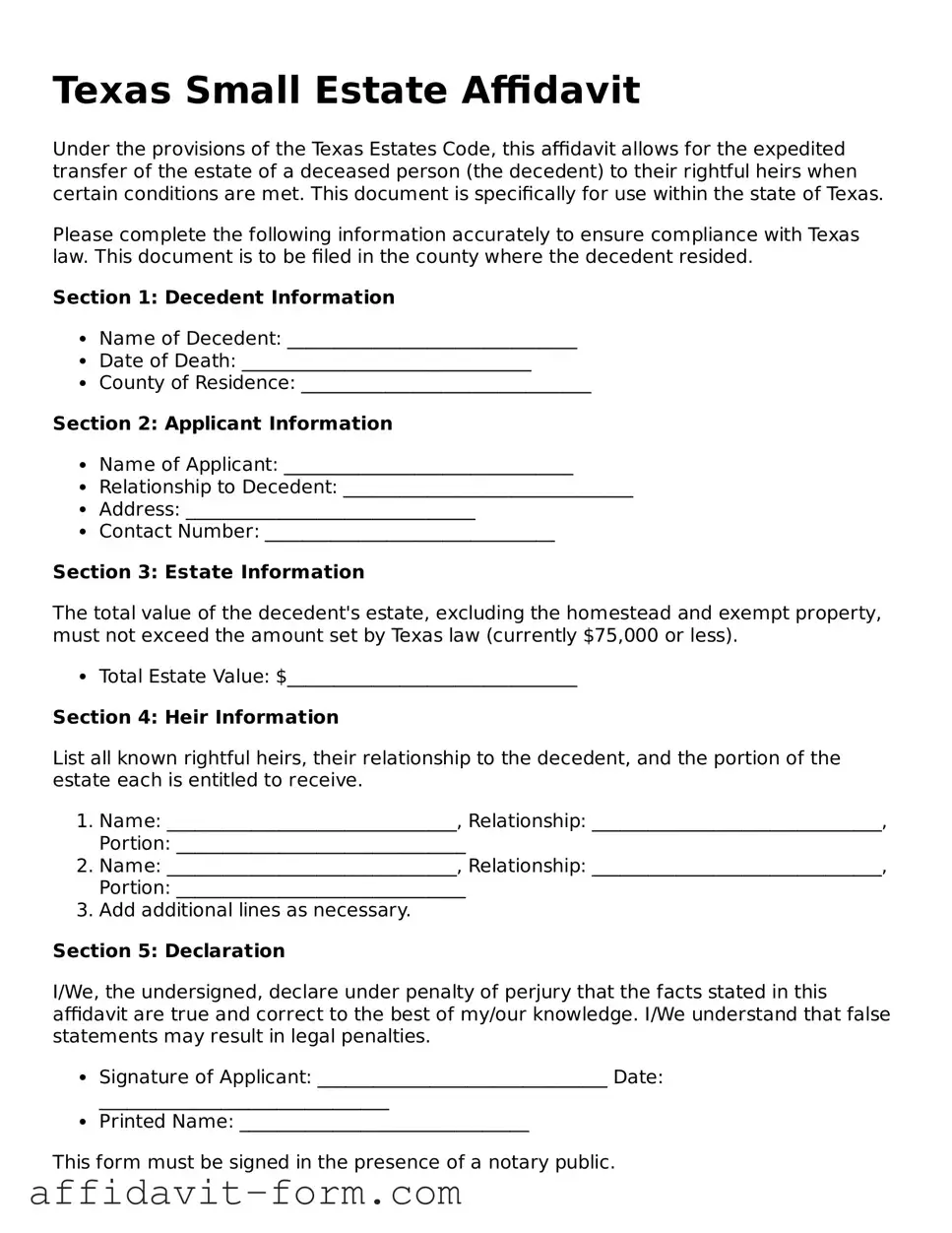Texas Small Estate Affidavit
Under the provisions of the Texas Estates Code, this affidavit allows for the expedited transfer of the estate of a deceased person (the decedent) to their rightful heirs when certain conditions are met. This document is specifically for use within the state of Texas.
Please complete the following information accurately to ensure compliance with Texas law. This document is to be filed in the county where the decedent resided.
Section 1: Decedent Information
- Name of Decedent: _______________________________
- Date of Death: _______________________________
- County of Residence: _______________________________
Section 2: Applicant Information
- Name of Applicant: _______________________________
- Relationship to Decedent: _______________________________
- Address: _______________________________
- Contact Number: _______________________________
Section 3: Estate Information
The total value of the decedent's estate, excluding the homestead and exempt property, must not exceed the amount set by Texas law (currently $75,000 or less).
- Total Estate Value: $_______________________________
Section 4: Heir Information
List all known rightful heirs, their relationship to the decedent, and the portion of the estate each is entitled to receive.
- Name: _______________________________, Relationship: _______________________________, Portion: _______________________________
- Name: _______________________________, Relationship: _______________________________, Portion: _______________________________
- Add additional lines as necessary.
Section 5: Declaration
I/We, the undersigned, declare under penalty of perjury that the facts stated in this affidavit are true and correct to the best of my/our knowledge. I/We understand that false statements may result in legal penalties.
- Signature of Applicant: _______________________________ Date: _______________________________
- Printed Name: _______________________________
This form must be signed in the presence of a notary public.
